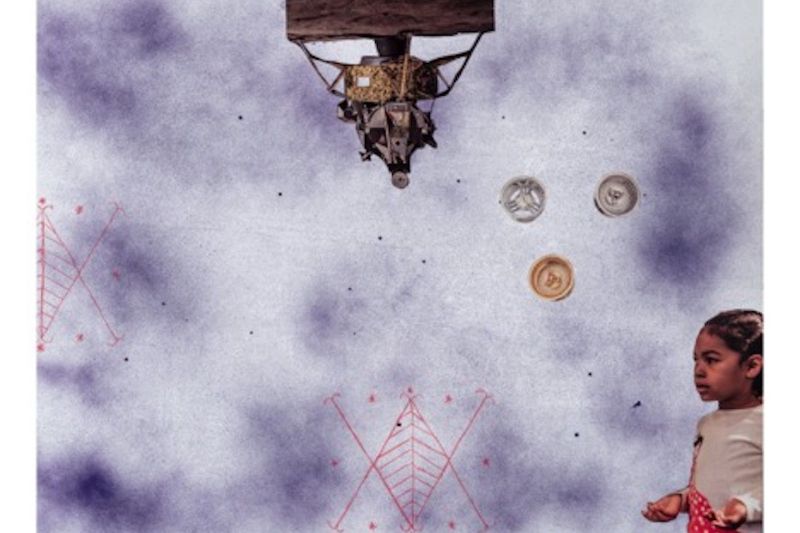Teach This Poem, though developed with a classroom in mind, can be easily adapted for remote-learning, hybrid-learning models, or in-person classes. Please see our suggestions for how to adapt this lesson for remote or blended learning. We have also noted suggestions when applicable and will continue to add to these suggestions online.

Look closely at the image of Krista Franklin’s “take root among the stars.”
The following activities and questions are designed to help your students use their noticing skills to move through the poem and develop their thinking about its meaning with confidence, using what they’ve noticed as evidence for their interpretations. Read more about the framework upon which these activities are based.
- Warm-up: Free-write or draw what comes to mind when you hear these phrases: in Latin, “Per aspera ad astra,” and the translation, “through hardships to the stars.” If you feel comfortable, share your writing/drawing with a classmate or small group.
- Before Reading the Poem: Look closely at the image of Krista Franklin’s “take root among the stars.” (Teachers, this quote is a reference to Octavia E. Butler’s, Parable of the Sower.) What stands out to you in this image? Why? What else do you see? How does this image compare to your writing or drawing?
- Reading the Poem: Now, silently read the poem “Per aspera ad astra” by Huascar Medina. What do you notice about the poem? Note any words or phrases that stand out to you or any questions you might have.
- Listening to the Poem (enlist two volunteers to read the poem aloud): Listen as the poem is read aloud twice, and write down any additional words and phrases that stand out to you.
- Small-group Discussion: Share what you noticed about the poem with a small group of students. Based on the details you just shared with your small group and the resources from the beginning of class, how does this poem compare to the image? (Teachers, share more information about the title and Kansas’s motto.) How does this information inform your reading of the poem?
- Whole-class Discussion: How would you describe the speaker in this poem? What is the relationship between the speaker and nature? How does the speaker feel about magic? Do you agree?
- Extension for Grades 7-8: What do you find captivating, interesting or magical? Make a list and choose one or more items on your list to write a poem about. Share your poem with the class.
- Extension for Grades 9-12: (Teachers, if you are able to, you might want to join with a science teacher.) Choose to read more nature poems or learn more about your own local plants and create your own catalog of local plants. Share your findings or poems with the class.
“The motto of Kansas, ‘Ad Astra per Aspera’ is Latin for ‘to the stars through difficulties.’ John James Ingalls coined the motto in 1861 stating, ‘The aspiration of Kansas is to reach the unattainable; its dream is the realization of the impossible.” Read more about the motto, and the Poet Laureate of Kansas, Huascar Medina.
Free verse: poetry not dictated by an established form or meter and often influenced by the rhythms of speech. Read more.
